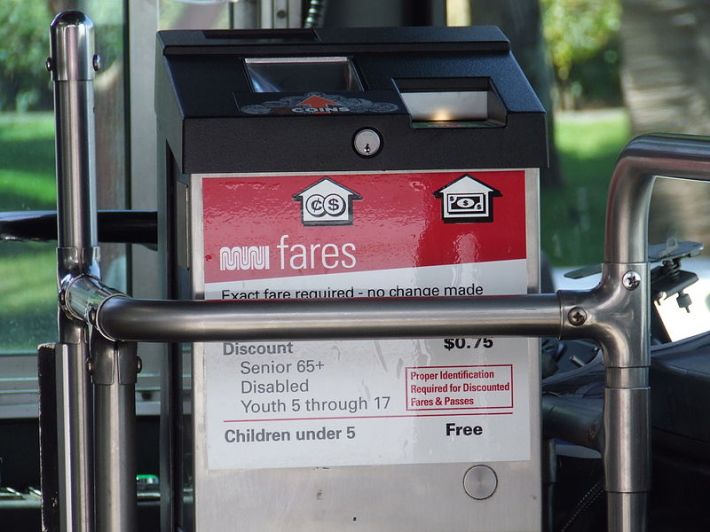Muni will carry 700,000 trips today, making it the most heavily traveled transit system in the Bay Area. But as you read this, many buses and trains are at a standstill. They’re stopped as people fumble with dollar bills and coins, needlessly creating delays that our transit system can’t afford.
In San Francisco, it’s not unusual to wait 30 minutes for a bus or train. Muni averages just eight miles per hour and its vehicles show up late half the time. Our city spends $1 billion a year on Muni; for that we get America’s slowest and least reliable transit system.
There are many ideas to accelerate Muni but one stands out as cheap and easy: offer discounts for paying fares electronically.
Clipper Cards have been around for years and Muni riders can even pay fares with a new smartphone app. But despite the convenience, about half of passengers still pay with cash—and with each transaction a surprisingly complicated ritual unfolds. First insert a dollar into the fare box, then one more, and then there's the clumsy search for change. Finally, the driver tears off a transfer and hands it to the passenger.
Allowing a few seconds for this antiquated routine may not sound like a big deal. But on a single bus, hundreds of small inefficiencies can slow the vehicle by several minutes. Across Muni’s 1,000 vehicles and 82 routes, millions of little delays accumulate. That translates into many hours.
The unnecessary dawdling that happens when people pay with cash has real consequences, especially if you ride Muni to work. For hourly workers, Muni’s delays often mean docked paychecks and stressful warnings about losing their jobs. For salaried workers, Muni is a tired but widely accepted excuse for being late to work. And the costs are real.
In 2013, Muni’s delays cost workers $50 million in lost productivity. In April of that year, Muni riders were delayed a cumulative 19 years and eight months.
Speeding up Muni is a complex puzzle. And an important piece of it is to encourage people to skip the line at the fare box and board with a swift tap of a Clipper Card. That’s why I support SFMTA Director Ed Reiskin’s call for a 25 cent discount when paying with a Clipper Card.
Some have argued that this will burden the poor. But our city’s most vulnerable Muni riders already have access to discounted and free passes. Other cities incentivize electronic boarding. New York offers an 11 percent bonus. In Boston there’s a 50 cent incentive–twice what’s proposed here. In the East Bay, there’s an incentive on AC Transit. And London’s buses are already cashless.
Getting a Clipper Card is a simple, one-time task. And like our checkout bag ordinance, we know a small incentive can inspire changes that have a big impact.
It’s time to incentivize electronic boarding in San Francisco. If you support this common-sense upgrade to our transit system, please contact Mayor Ed Lee, your city supervisor, and members of the SFMTA board.
Andy Bosselman is an entrepreneur and a volunteer with the San Francisco Transit Riders, a grassroots nonprofit that advocates for fast, reliable Muni service. A version of this editorial appeared in the San Francisco Chronicle.





